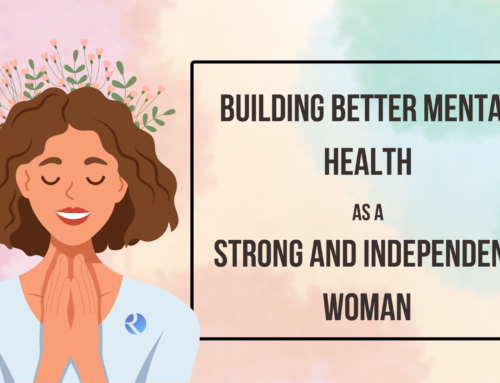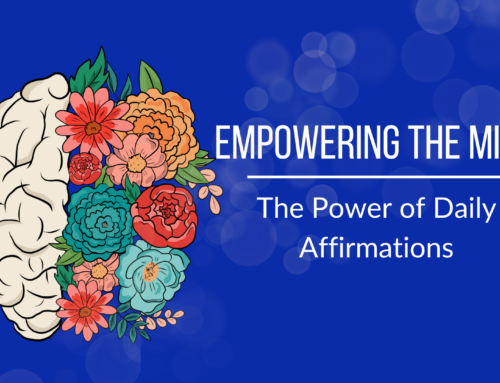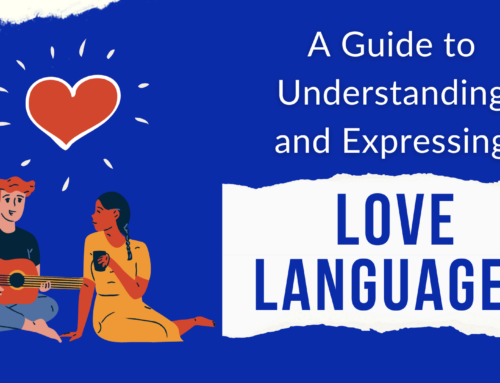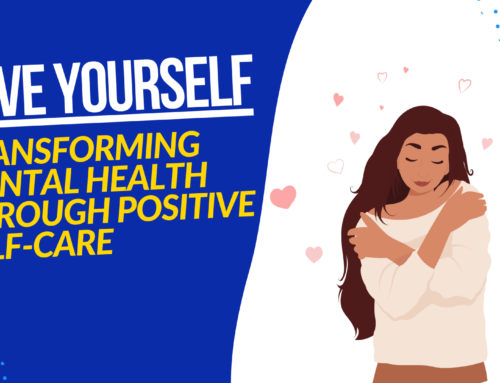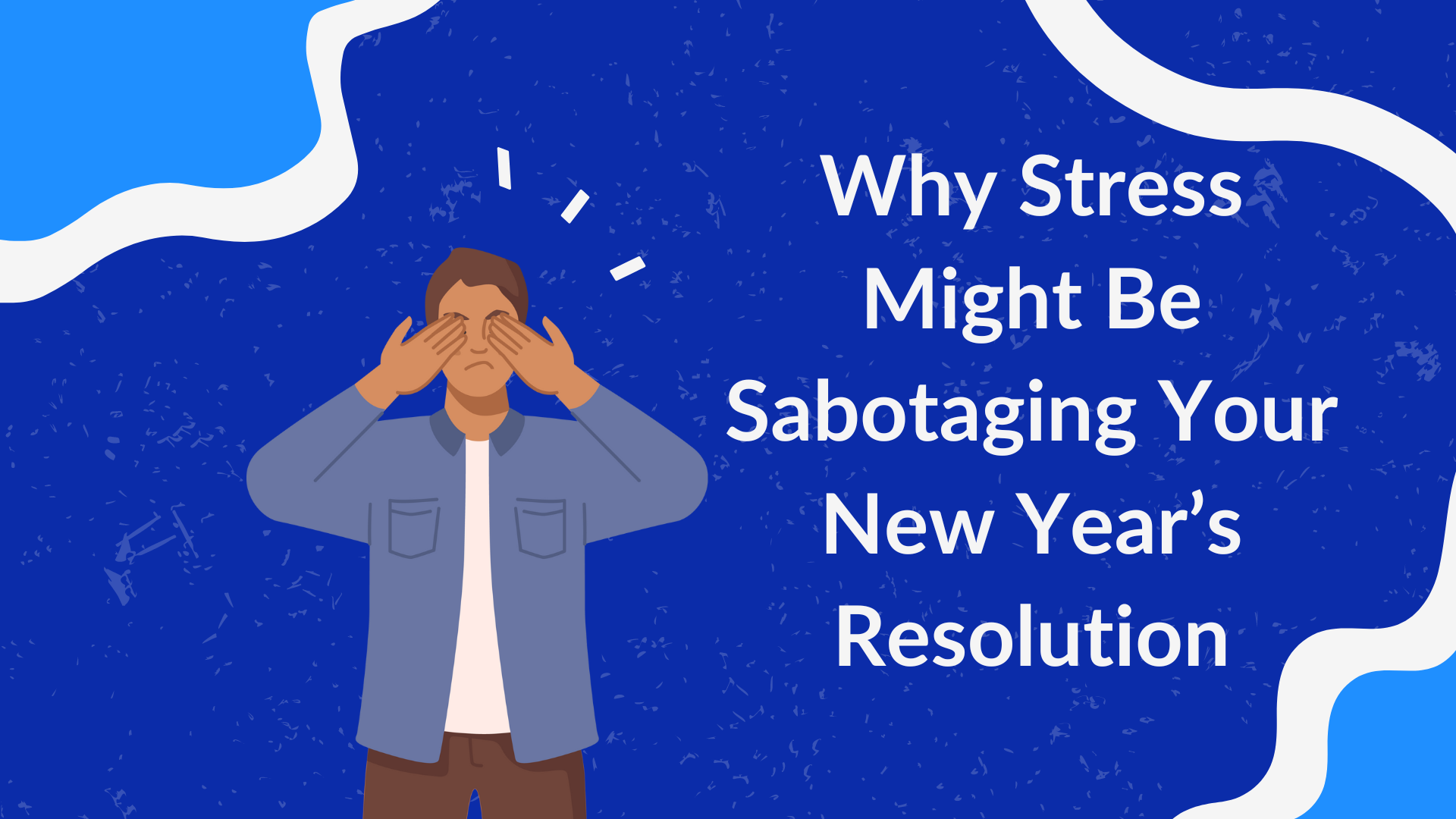
And what you can do about it.
Welcome to February 2023! How’s your resolution going?
If it’s not great, that’s okay. We’ve all been there, bargaining with ourselves as we try to use the New Year to break our undesirable habits. I myself have wondered if there’s something wrong with me as New Year’s after New Year’s passed, and I couldn’t keep any of my resolutions. It wasn’t until after a lot of self-reflection and higher education neuroscience courses that I came to a realization:
Your lack of follow-through is not because you’re broken. It’s because your brain is trying to protect you from sources of stress that plague your daily existence, and it does this by conserving energy.
In Part 1 of this blog, I wrote about how to teach your brain to refocus its attention in preparation for the New Year. Keep reading to find out how stress can override our attention span and stop us from achieving our resolutions and every day goals and what you can do about it.
Stress Dictates Our Energy Efficiency
Our brains take up about 2% of our body weight but use 20% of our energy resources. Even more interestingly, when faced with a new challenging task, the brain’s energy use only increases by about 5% more. So what’s it doing in all that time?
Current science supports the existence of something called the Default Mode Network. It’s a collection of brain areas that are constantly on but do the most work when we’re not paying attention to anything, like sleeping or daydreaming. Its job is to constantly update our predictions of the world around us so that we can easily simplify the barrage of information that floods our daily lives. According to this theory, if toxic stress is constantly part of your experience, then your brain learns to predict more stressful events. In other words, when you think you’re stuck in a negative spiral, it’s your brain taking your bad experience and using it to predict the next one.
Meanwhile, The Salience Network (another network of brain regions) steps in when you’re dealing with a new task and tells you what to focus on. Its drawback is that it has limited resources. It has to pick and choose what is essential to pay attention to and what can be ignored. When the Default Mode Network predicts stress, the Salience Network will likely perceive those daily stressors as an immediate threat to your surroundings and command your focus on them. That means it has no capacity to attend to new things it deems less necessary, like New Year’s resolutions.
So that’s the solution. Get rid of the stress, and get back to focusing your attention on things that are important to you.
Of course, for most people, that doesn’t seem like an easy task. The stress that distracts us from our goals requires that we change our focus to resolve it, right? Yes, but the good news is that many tools are available to manage your stress and change your focus with minimal effort, most of which only require about an hour of your week or 10 minutes from your day.
Handling Stress Is An Emotional and Mindful Process
Stress involves the activation of your emotional and memory centers in the brain. It’s supposed to be a self-regulating negative feedback loop; the activation of the stress response also triggers a release of hormones designed to deactivate the stress response. This occurs in all sorts of situations, from being chased by a tiger to being annoyed by your friend.
However, today’s society encounters stressors more frequently just because of how fast-paced the modern world is! Building resiliency to stressful situations helps counter daily stressors so you can adapt and move forward, but it requires having good emotional self-regulation skills.
Mindfulness practices are one of the leading solutions to managing daily stress and symptoms of depression and anxiety. People who have taken on a daily mindfulness practice also report more self-compassion, wisdom, and (you guessed it) emotional self-regulation.
With the advent of self-guided meditation and mindfulness technology, stress reduction is as easy as downloading an app and getting started. Some applications (backed by scientific research) include:
- Headspace (iOS, Google Play)
- Calm (iOS, Google Play)
- Serene (iOS only)
However, mindfulness and resiliency are emotional processes that must be developed over time. Sometimes, a stressor is invasive enough that you can’t get it out of your head, or you want to work through your problem right now. That’s why rREST was created.
rREST as your “Easy Button” For Stress
rREST is a simple step-by-step technique that is designed to target your stress at its roots: emotion and memory. You see, most of our stress responses are developed in our early years of life when the higher functioning areas of our brains are still developing and learning to understand the world. Children don’t have the long-term planning or logical thinking skills of adults, so the smallest events can be stressful.
Science shows that while the higher-order functions of a child’s brain are not fully developed yet, their emotional spectrum is, without the self-regulatory skills, of course. Stressful events are wired into us through emotional memories as we learn what is safe and what isn’t. Then, the Default Mode Network doubles down on those experiences and uses them to make similar predictions as adults. When we encounter similar triggers in our lives, we elicit the same emotional response as the original event. Our inner children (via the stress response) take over to handle the perceived danger, no matter how irrational it seems as an adult.
rREST is designed to discover those original events from your childhood in a non-traumatic way and process them with your adult brain. It’s an evolution of two decades worth of different stress intervention techniques that will help you give your stress response a break from being “on” all the time.
So, if you want to take your New Year’s resolutions into your own hands today, click here for a complimentary consultation with a rREST coach and see if rREST is a good fit for you. I can’t wait to see what you discover.
References
Al-Refae, M., Al-Refae, A., Munroe, M., Sardella, N. A., & Ferrari, M. (2021). A Self-Compassion and Mindfulness-Based Cognitive Mobile Intervention (Serene) for Depression, Anxiety, and Stress: Promoting Adaptive Emotional Regulation and Wisdom. Frontiers in Psychology, 12(a648087). https://doi.org/10.3389/fpsyg.2021.648087
Huberty, Green, J., Glissmann, C., Larkey, L., Puzia, M., & Lee, C. (2019). Efficacy of the Mindfulness Meditation Mobile App “Calm” to Reduce Stress Among College Students: Randomized Controlled Trial. JMIR mHealth and uHealth, 7(6), e14273–e14273. https://doi.org/10.2196/14273
Rebello, Moura, L. M., Pinaya, W. H. L., Rohde, L. A., & Sato, J. R. (2018). Default Mode Network Maturation and Environmental Adversities During Childhood. Chronic Stress, 2, 2470547018808295–2470547018808295. https://doi.org/10.1177/2470547018808295
Shine, O’Callaghan, C., Halliday, G. M., & Lewis, S. J. G. (2014). Tricks of the mind: Visual hallucinations as disorders of attention. Progress in Neurobiology, 116, 58–65. https://doi.org/10.1016/j.pneurobio.2014.01.004
Taylor, Cavanagh, K., Field, A. P., & Strauss, C. (2022). Health Care Workers’ Need for Headspace: Findings From a Multisite Definitive Randomized Controlled Trial of an Unguided Digital Mindfulness-Based Self-help App to Reduce Healthcare Worker Stress. JMIR mHealth and uHealth, 10(8), e31744–e31744. https://doi.org/10.2196/31744

